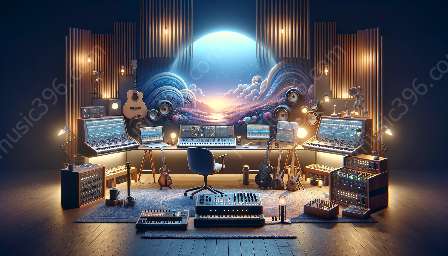The MIDI (Musical Instrument Digital Interface) protocol is a key element in modern music production and performance. Understanding the various types of MIDI messages is essential for effectively utilizing MIDI technology in the creation and manipulation of musical data. This comprehensive guide will delve into the different types of MIDI messages and their significance in relation to music notation and MIDI.
MIDI and Music Notation
MIDI messages play a crucial role in the transfer of musical information between electronic musical instruments, computers, and other devices. When it comes to music notation, MIDI messages are used to represent various aspects of musical performance, including note-on and note-off events, pitch bend, modulation, and more. These messages are integral to accurately translating musical performances into digital form, enabling the creation of sheet music, scores, and arrangements.
The Impact of MIDI Messages
Understanding the diverse types of MIDI messages and their functions is essential for musicians, producers, and music enthusiasts. By utilizing MIDI messages effectively, musicians can control and manipulate a wide array of musical parameters, such as dynamics, expression, and timbre. Furthermore, MIDI messages are crucial in the context of music sequencing, allowing for the precise arrangement and manipulation of musical data.
Exploring Different Types of MIDI Messages
1. Note-On and Note-Off Messages
One of the fundamental types of MIDI messages, note-on messages indicate when a note is pressed on a MIDI instrument, while note-off messages signal the release of the note. These messages are essential for accurate representation of musical performances and are particularly important in music notation and MIDI-based recording and playback systems.
2. Control Change Messages
Control change messages, often abbreviated as CC messages, are used to adjust parameters such as volume, panning, and other control functions. In music notation, these messages can be used to notate changes in dynamics, expression, and other performance nuances.
3. Program Change Messages
Program change messages are utilized to switch between different instrument sounds or patches within a MIDI device. In the context of music notation, these messages can dictate changes in instrumentation or voice assignments, influencing the overall musical arrangement.
4. Pitch Bend Messages
Pitch bend messages enable the alteration of pitch in real-time, providing a means for expressive and dynamic musical performances. When translated into music notation, pitch bend messages can affect the representation of glissando, portamento, and other pitch-related notations.
5. System Exclusive Messages
System exclusive messages are manufacturer-specific commands that allow for in-depth control and customization of MIDI devices. While not directly related to music notation, system exclusive messages are critical for the seamless integration and operation of MIDI-based equipment in music production and performance environments.
6. Aftertouch Messages
Aftertouch messages convey the amount of pressure applied after a key has been struck on a MIDI keyboard. In music notation, aftertouch messages can influence the portrayal of nuanced dynamics and articulation, adding depth and expressiveness to notated musical performances.
Utilizing MIDI Messages in Music Production
As technology continues to shape the landscape of music production, MIDI messages have become indispensable tools for musicians and producers. By harnessing the power of MIDI messages, artists can sculpt intricate musical arrangements, infuse expressive nuances, and seamlessly integrate electronic and acoustic elements into their productions.
Conclusion
Comprehensive knowledge of the different types of MIDI messages is essential for anyone involved in music creation, production, and performance. Whether working with music notation, MIDI devices, or music production software, understanding MIDI messages empowers individuals to harness the full potential of MIDI technology and shape musical experiences with precision and creativity.


